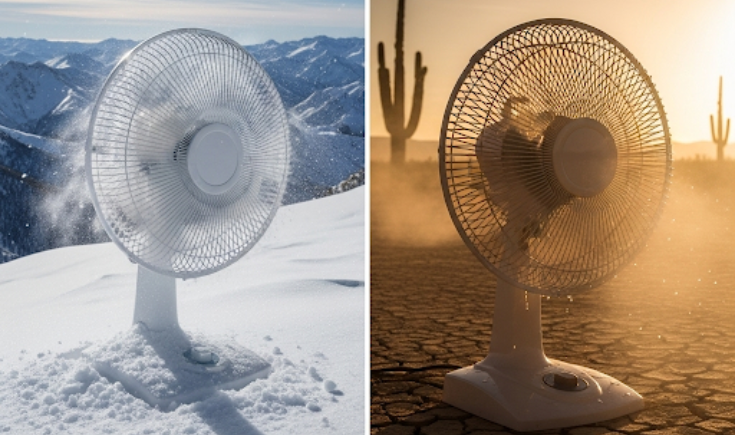- Gala No. 19, 2nd Floor,
Bail Bazar, Mumbai, India - +91 88 5002 0455
info@alfafans.in


When it comes to industrial fans, HVAC systems, and cooling equipment, environmental factors play a huge role in overall efficiency. Two of the most overlooked yet critical elements that directly affect fan performance are altitude and temperature. Whether you’re designing a ventilation system, running an industrial cooling application, or maintaining HVAC equipment in challenging environments, understanding these factors is essential for optimizing airflow, energy efficiency, and equipment lifespan.
At higher altitudes, the air density decreases due to lower atmospheric pressure. Since fans are designed to move a certain volume of air, a reduction in air density means:
For instance, a fan operating at sea level will perform more efficiently than the same fan installed in a facility located 5,000 feet above sea level. Engineers must adjust fan selection, motor power, and system design to compensate for the change in air density.
Temperature directly influences air viscosity and density, which in turn affects fan performance:
When selecting fans for industrial cooling systems, server rooms, or high-temperature processes, engineers need to account for these variations to ensure consistent airflow and durability.
When both altitude and temperature are considered together, their combined impact can significantly alter fan performance:
Engineers often use correction factors and fan laws to accurately predict performance under these combined conditions.
Altitude and temperature are critical environmental factors that directly impact fan performance, energy efficiency, and system reliability. By accounting for changes in air density, pressure, and thermal effects, engineers and facility managers can make smarter decisions when selecting and operating fans. Whether it’s for an industrial plant, HVAC system, or high-tech cooling solution, adjusting for altitude and temperature ensures optimal performance, reduced energy costs, and longer equipment life.
At Alfa Fans, we help you size, select, and optimize fans for real-world operating conditions—sea level or summit. Talk to our team to match the right fan, motor, and controls to your environment and performance goals.